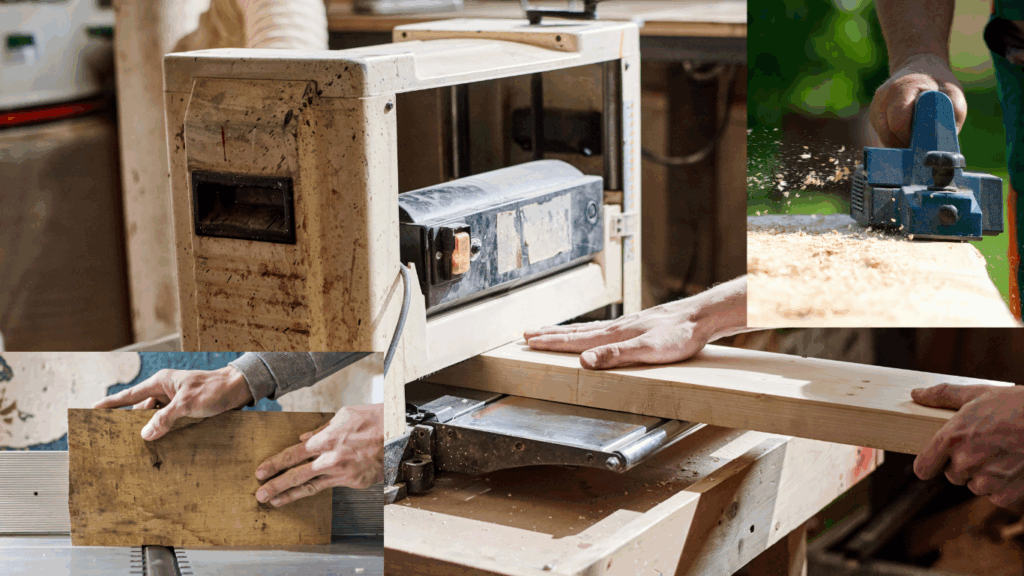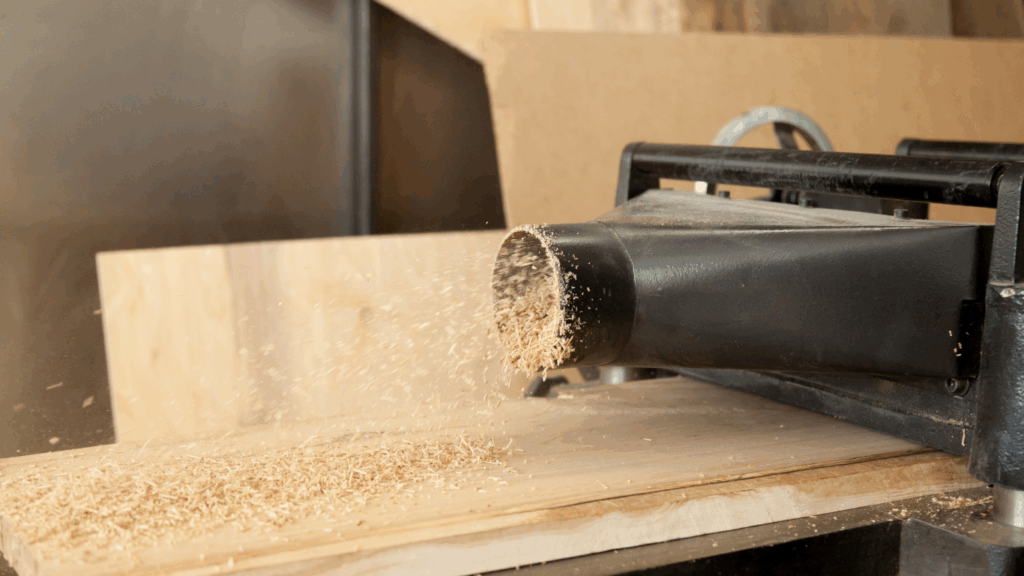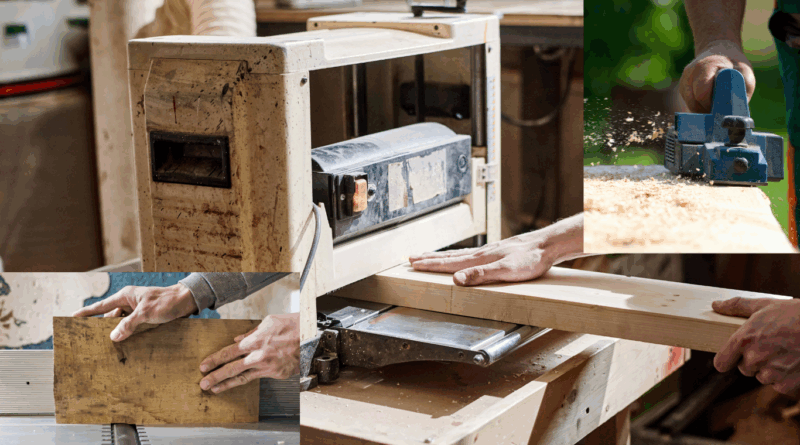What Does a Wood Planer Do?

If you’ve ever watched a woodworking video and seen someone push a rough plank into a machine—only for it to come out the other side silky smooth—you’ve just witnessed the magic of a wood planer. It’s one of those tools that doesn’t get the same hype as saws or sanders, but trust me: without it, most woodworking projects would look like driftwood gone wrong.
So, what does a wood planer do, exactly? Let’s break it down without the tech jargon. This post is for anyone who’s ever looked at a crooked board and thought, “there has to be a better way” because there is.
The Simple Answer: It Makes Wood Flat, Smooth, and the Right Thickness
At its core, a wood planer (also called a thickness planer) does three key things:
- It shaves wood down to an even thickness.
You set a measurement—say, ¾ inch—and the planer removes thin layers from the surface until the board matches that exact thickness across its length. - It smooths rough lumber.
If your board looks like it’s been through a lumberjack’s boot camp (all splinters and saw marks), a planer’s razor-sharp blades smooth everything out. - It makes both faces parallel.
This one’s underrated. A planer ensures both sides of the board are flat and parallel, which is critical if you ever want to join edges or stack boards snugly. (More on this later because you will also need a jointer for truly square boards.)
In short: if sandpaper is your finishing touch, a planer is your foundation. It takes chaos and turns it into symmetry.
A Quick Analogy: Think of It as a Giant Pencil Sharpener for Wood
Imagine you’re sharpening a pencil. You don’t want a lopsided, uneven point—you want something balanced and clean. A planer does the same thing but for boards.
Rough lumber comes warped, bowed, or just plain bumpy. Feeding it through a planer shaves off imperfections, leaving a perfectly flat, level piece that’s ready for whatever you’re building—furniture, a deck, or even a handmade wedding ring box (wink, wink).
But Wait, Isn’t That What a Jointer Does?
Ah, the age-old question. Planer vs. jointer: the great woodworking debate.
Here’s the difference:
- A jointer flattens one face and squares up an edge.
- A planer makes the opposite face parallel and adjusts thickness.
Think of them as a dynamic duo: the jointer makes one perfect surface, and the planer makes sure the other side matches near perfectly. You can’t build a straight, square piece of furniture without both, unless you enjoy wobbly tables and uneven shelves.
So, What Does a Wood Planer Actually Look Like?
Most modern thickness planers are rectangular boxes with two feed rollers and a rotating cutter head inside. You feed your board in one end, and as it passes through, spinning blades shave off thin curls of wood, like parmesan cheese for your workshop floor.
Pro Tip: I’ve seen saw dust described as a woodworker’s glitter, and I couldn’t agree more. Make sure you have either a good shop vac or a vac system in place when using a thickness planer because it will generate a lot of dust and shavings.
Planers range from handheld planers (great for spot work or trimming doors) to benchtop planers and industrial floor models that can handle huge slabs. For most hobbyists and DYIers , a benchtop planer is the sweet spot: compact, powerful, and not completely unaffordable.
Why a Wood Planer Is a Game-Changer
If you’re serious about woodworking or just love the idea of turning rough materials into something beautiful, a planer changes everything. Here’s why:
1. It Saves You Money
Buying pre-surfaced lumber (known as “S4S,” or surfaced on four sides) is convenient but pricey. With a planer, you can buy rough-cut boards for a smaller cost and smooth them yourself. Over time, a wood planer pays for itself.
2. It Gives You Creative Freedom
Ever fallen in love with a slab of walnut that’s too thick for your project? No problem. A planer lets you take it down to the exact thickness you need. Want perfectly matched boards for a tabletop or cutting board? Planer. Want to reclaim old barn wood without sanding forever? Planer again.
3. It Makes Everything Fit Better
In woodworking, precision is everything. Boards that are just a millimeter off can mess up an entire build. A planer ensures each piece matches perfectly, saving you frustration and giving you a much more polished look.
4. It’s Weirdly Satisfying
Let’s be honest—feeding a rough board into a planer and watching it come out smooth as glass is just fun. The sound, the feel, the perfect wood shavings curling away. It’s like therapy, but with power tools.
Tips for Using a Wood Planer Like a Pro

You don’t need a decade of experience to get great results. Just remember these tips before firing up your planer:
- Check your grain direction.
Always feed the board with the grain running forward. Going against it can cause tear-out (ugly chip marks). - Take light passes.
Don’t get greedy—remove a small amount (1/32” to 1/16”) at a time for a smoother finish and less strain on your blades. - Support long boards.
If your board is longer than your planer’s table, use roller stands or supports. Otherwise, it’ll dip and you’ll get uneven results and it can also be potentially dangerous. - Listen to your planer.
No joke. Experienced woodworkers can hear when their planer is cutting too deep or when the blades are dull. Trust your ears as much as your eyes. - Keep it clean.
Planers produce a LOT of shavings. Empty your dust collection bag often or risk a sawdust snowstorm. And DON’T FORGET to mask up! You do not want to inhale saw dust.
When a Planer Won’t Help
Here’s the thing: planers are a great wood working investment, but they can’t fix everything.
If your board is warped, twisted, or cupped, the planer will make both sides parallel… but it’ll still be crooked. That’s where a jointer or hand plane comes in first.
Think of the planer as your refinement tool, not your repair tool. It perfects good wood, but it doesn’t redeem bad wood.
Fun Fact: Ancient Planers Existed Before Electricity

Believe it or not, planers have been around for centuries. Traditional hand planes were the original planers, using muscle and a sharp blade to smooth and flatten boards. Modern planers just mechanized the process, making it faster (and far less sweaty).
And that’s not to say you can’t use manual hand planers today. Many woodworkers pride themselves on using only hand tools. But you are not less of a woodworker because you use an electrical option!
But if you ever want to connect with woodworking history, try using a hand plane for a single board. You’ll gain a whole new appreciation for power tools.
Or considering an electric hand planer? Here are some thoughts on the Ryobi hand planer.
What Does a Wood Planer Do? (Final Thoughts)
In one sentence: a wood planer turns rough, uneven boards into perfectly smooth, consistent, and ready-to-build material. It does require the use of a jointer or hand planer first to make sure you have at least one straight edge to act as a guide.
Whether you’re building a dining table, a bookshelf, or a handcrafted wooden ring display, the planer is what takes your work from “handmade” to “heirloom.”
So next time someone asks you “what does a planer do?” you can just smile and say,
“It makes my projects look professional.”
